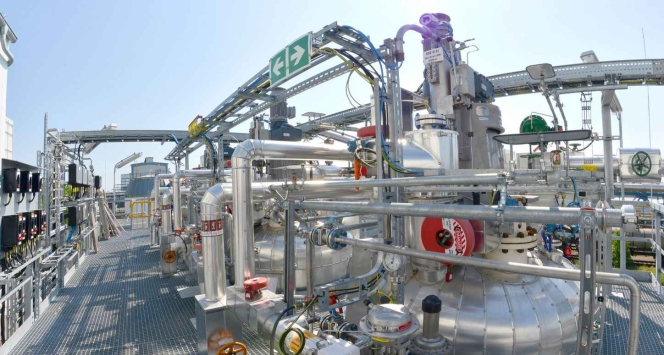
 Reflecting on current and future trends in the tyre industry, Andre Lanning, Global Business Director, Synthetic Rubber, Trinseo Europe GmbH, sees the need for much closer collaborations - not only between tyre companies and suppliers but among suppliers themselves. “If we really want to address the big issues in the industry, reduce rolling resistance, improve fuel efficiency, and get better at recycling and re-using materials and chemicals, we need to have a paradigm shift in how we approach innovation.”
Reflecting on current and future trends in the tyre industry, Andre Lanning, Global Business Director, Synthetic Rubber, Trinseo Europe GmbH, sees the need for much closer collaborations - not only between tyre companies and suppliers but among suppliers themselves. “If we really want to address the big issues in the industry, reduce rolling resistance, improve fuel efficiency, and get better at recycling and re-using materials and chemicals, we need to have a paradigm shift in how we approach innovation.”
According to Dr. Sandra Hofmann, Director, Technology & Innovation, Synthetic Rubber, Trinseo Deutschland GmbH, speed (response time to market) and sustainability are the main trends that will dominate the global tyre industry compared to other industries.
“The tyre industry, traditionally, has been conservative on knowledge-sharing and collaborating on innovation. Going forward, collaborations are key to moving forward as the complexity in the segment we are focusing on is very high. Every stakeholder in the tyre industry is driving hard for innovations, and, on the co-suppliers’ side, we are keen on collaborations. And, of course, working together with customers is always part of the development,” said Dr. Hofmann.
In recent times, Trinseo has been focusing on close relationships with other stakeholders for developing new products. Trinseo fosters deep engagement with partners through its centralised synthetic rubber site located in Schkopau, Germany, where technology & innovation, mini-plant, pilot plant, and expanded production assets are located. To reduce product development time from lab sample to commercialisation, Trinseo started a state-of-the-art S-SBR pilot plant in Schkopau, for its synthetic rubber business, which makes it more agile and flexible than ever before in its ability to turn around S-SBR product testing. The company says the S-SBR pilot plant allows for more efficient use of Trinseo’s production facilities and helps speed up innovation in the performance tyres market. As part of its efforts, the company introduces the early development process to its customers. “We have invested substantially in R&D. In 2018, we started the pilot plant where we can make several hundred kilograms of materials, and that is enough for our development partners and customers to build a tyre already in the product development process,” said Dr. Hofmann.
Dr. Hofmann added, “The capabilities we are bringing to the table, in combination with our openness and willingness for collaborations, are major enablers towards shortening of the product development process.”
Major tyre companies are betting high on recycled and bio-mass materials, aiming to eliminate materials derived from fossil fuels, to make tyres in the future. However, the ‘industrialisation’ of recycled and bio-mass materials to obtain synthetic rubber will be a more significant threshold. “It is nice to have targets, but the main challenge is to implement these targets through technology. Making synthetic rubber from recycled and bio-mass materials will be a gradual process, and we see it as an opportunity and want to be a front runner for sustainability”, said Lanning.
Sustainability
Trinseo, according to the executive, is already contributing to tyre companies’ sustainability efforts by supplying solutions that reduce rolling resistance, CO2 emissions and improve fuel efficiency.
“Sustainability has many dimensions. It could be recycled and bio-based materials. As a company, we are very much active in the recycling of polystyrene back into styrene monomer which can be introduced as recycled feedstock for packaging applications. As for butadiene, for a long time, it has been made of biomass like sugar and others. As a company, we are exploring sources of sustainable feedstocks, not only looking at how we can contribute to our customers’ sustainability efforts, but to the raw materials that go into our own products,” explained Dr Hofmann.
When asked about having a common platform for all stakeholders to develop products, Lanning, said “if tyre manufacturers are serious about sustainability, there needs to be closer and more open collaboration around innovation between tyre and rubber producers. And that is not the case today. Working together we can tackle the challenges, whereas pursuing innovation completely separately will make it harder to reach the sustainability targets”.
Trinseo has an excellent technical community, called Technical Service & Development Group, that works with its customers around the world. This way, the company educates them on its products and their usages. “Irrespective of where we operate, Trinseo focuses on high-end technologies in functionalised S-SBR,” said Lanning. Dr Hofmann added “We are investing heavily in local markets to provide our products and services more efficiently and improve communications between our customers and the company”.
Synthetic rubber is now being used for passenger car tyres, owing to properties that make it suitable for high-end tyres. Trinseo is expanding its portfolio by also focusing on truck and bus tyres (the company’s low Tg polymers like SPRINTAN SLR 3402 are already used in truck and bus tyres as a partial replacement for natural rubber; they improve energy efficiency and performance, predominantly balancing rolling resistance and wear).
“We need to increase the use of synthetic rubber in truck and bus tyres to further impact global sustainability goals. To achieve these goals, we are looking for customers that plan to have SR in tyres for heavy commercial vehicles as well, but we are also using this opportunity to educate the end customers about the advantage of using functionalised S-SBR” said Lanning.
Another challenge for material suppliers is to keep its product development strategies aligned with the fast-changing trends in the automotive industry. Fundamental requirements of low rolling resistance in tyres are not changing in any types of new mobility, believes the company executive. “We also see a shift of focus on wear improvement,” added Dr Hofmann.
Optimising all three aspects of the magic triangle has always been a challenge. The latest functionalised SPRINTAN™ S-SBR grades are proven to reduce lab indicators for rolling resistance by 30 percent compared to nonfunctionalised synthetic rubber grades. This allows for at least three to five percent less fuel consumption in passenger cars. Trinseo’s recently launched SPRINTAN 918S displaying multi-functionalisation technology to reduce rolling resistance and improve wet grip for ultra-high-performance tyres used on premium cars and SUVs.
Global Natural Rubber Market Tightens Amid Improved Demand, ANRPC Reports
- By TT News
- November 07, 2025
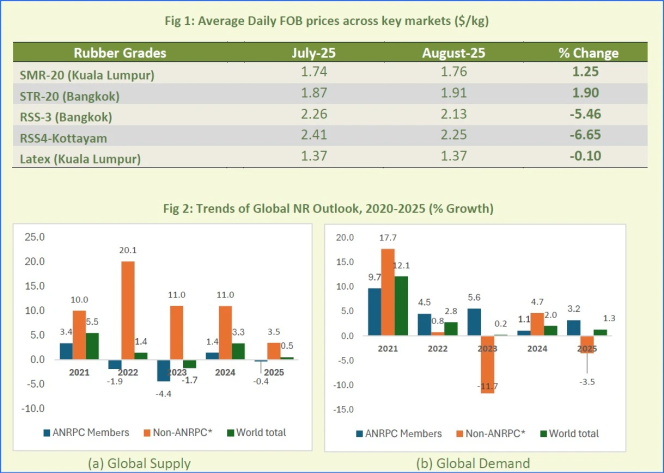
The global natural rubber (NR) market experienced fluctuating prices in August 2025 as supply constraints coincided with signs of improving demand, the Association of Natural Rubber Producing Countries (ANRPC) said in its latest Monthly NR Statistical Report.
The association noted that seasonal factors supported stronger consumption, particularly in China, where declining port inventories signalled healthier demand. However, heavy rainfall and labour shortages in key producing regions curtailed tapping activities, tightening supply conditions.
“Natural rubber prices experienced a fluctuating trend due to several factors, including constrained supply and improving demand,” ANRPC said. “Seasonal factors boosted consumption, particularly in China, where inventory reductions at major ports indicated improved demand. However, rainfall and labour shortages in producing regions limited tapping activities, tightening supply.”
According to updated data from member countries, global natural rubber production is projected to increase by 0.5 percent in 2025 compared with 2024, while demand is expected to grow by 1.3 percent over the same period.
The association said market sentiment had turned “increasingly optimistic” with stronger purchasing interest, driven by the traditional peak season for natural rubber, especially from the all-steel tyre and heavy-duty truck segments.
The ANRPC encouraged subscribers and stakeholders seeking more in-depth insights to refer to the full report or contact the ANRPC Secretariat for subscription details.
India Opens Anti-dumping Probe Into Halobutyl Rubber Imports From China, Singapore And US
- By Sharad Matade
- November 06, 2025

India has launched an anti-dumping investigation into imports of Halo-Isobutene-Isoprene Rubber (HIIR) from China, Singapore and the United States, following a complaint from Reliance Sibur Elastomers Private Limited, the Directorate General of Trade Remedies (DGTR) said in a notification.
The domestic producer alleged that the three countries were exporting the rubber to India at unfairly low prices, causing injury to the local industry. The company has sought the imposition of anti-dumping duties on the product, which is used in tyre inner liners, hoses, seals, tank linings, conveyor belts and protective clothing.
The DGTR said there was prima facie evidence that imports had risen “significantly” and were being sold below normal value, resulting in price depression and affecting the domestic manufacturer’s capacity utilisation and profitability. The authority noted that the dumping “is causing material injury to the domestic industry”.
The investigation will cover the period from July 2024 to June 2025, with an examination of injury trends dating back to April 2021.
HIIR, also known as halobutyl rubber, is classified under the broader synthetic rubber tariff category. Reliance Sibur Elastomers is currently the only producer of the material within India.
If the investigation confirms dumping and injury, the DGTR may recommend the imposition of duties to offset the impact and “remove the injury to the domestic industry”. Interested parties have 30 days to submit data and make their representations to the authority.
Global Carbon Black Market To Hit USD 44.8 Bln By 2034, Driven By Tyre And Autom Demand
- By TT News
- November 06, 2025

The global carbon black market is projected to grow from USD 27.88 billion in 2024 to USD 44.77 billion by 2034, expanding at a compound annual growth rate (CAGR) of 4.85 percent between 2025 and 2034, according to a new report by Towards Chemical and Materials, a research arm of Precedence Research.
The study estimates that the global market volume will rise from around 15.15 million tonnes in 2025 to 21.83 million tonnes by 2034, growing at a CAGR of 4.14 percent, driven primarily by increasing demand for tyres, automotive components and high-performance plastics.
Carbon black – a fine black powder made through the incomplete combustion of hydrocarbons – is a critical material used to reinforce rubber in tyre production and enhance strength, durability and UV resistance in plastics, coatings, and batteries.
Asia Pacific accounted for about 58 percent of global market share in 2024 and is expected to remain the largest and fastest-growing regional market, supported by expanding tyre and rubber manufacturing bases in China, India and Southeast Asia. The region’s carbon black market was valued at USD 16.95 billion in 2025 and is projected to reach USD 26 billion by 2034.
“The Asia Pacific region continues to lead both in production and consumption of carbon black, owing to its strong automotive, tyre and plastics industries,” the report noted, adding that China remains the world’s largest producer and consumer.
The furnace black segment dominated the market in 2024, accounting for about 60 percent of global industry share, due to its superior reinforcing properties in tyres and versatility in plastics and coatings. Meanwhile, the tyres and rubber products segment held a 55 percent share, reflecting the material’s indispensable role in the automotive sector.
Performance applications such as batteries, conductive polymers, and specialty coatings are emerging as key growth drivers. Demand for specialty carbon black and conductive grades is rising with the proliferation of electric vehicles, renewable energy systems, and electronics manufacturing.
Artificial intelligence (AI) is also shaping the carbon black industry, with automation and predictive analytics enhancing process efficiency, product consistency, and sustainability, the report said. AI-driven systems are enabling real-time monitoring and predictive maintenance in production plants, reducing waste and energy consumption.
Sustainability remains a key trend, with manufacturers investing in greener technologies, renewable feedstocks and recovered carbon black (rCB) from recycled tyres to meet circular economy goals. “Turning end-of-life tyres and rubber waste into recycled carbon black is opening new sustainable pathways for producers,” the study noted.
Among key players profiled in the report are Tokai Carbon Co., Ltd., Continental Carbon, Jiangsu C-Chem Co., Ltd., Himadri Speciality Chemical Ltd., Sid Richardson Carbon & Energy Company, Cancarb Limited, Philips Carbon Black Ltd., OCI Company Ltd., Columbian Chemicals Co. (Birla Carbon), Aditya Birla Group, and Raven SR, LLC.
Recent industry developments include PCBL Chemical Ltd.’s establishment of a wholly owned US subsidiary in Delaware in July 2025 to enhance supply chain localisation and strengthen its North American footprint, as well as the West Bengal government’s efforts to attract foreign investment in its carbon black industry to support the electric vehicle, tyre, and battery markets.
The report also forecasts rapid growth in North America, fuelled by clean manufacturing practices, sustainable process adoption and expansion in high-performance plastics and battery applications. Europe, meanwhile, is benefiting from stricter environmental regulations and the EU Green Deal, which are promoting eco-friendly and specialty grades.
The global carbon black market is expected to maintain steady long-term growth as manufacturers diversify into advanced applications and invest in sustainable production technologies to meet evolving industrial and environmental demands.
Kraton To Streamline Berre Polymer Operations Focus
- By TT News
- October 26, 2025
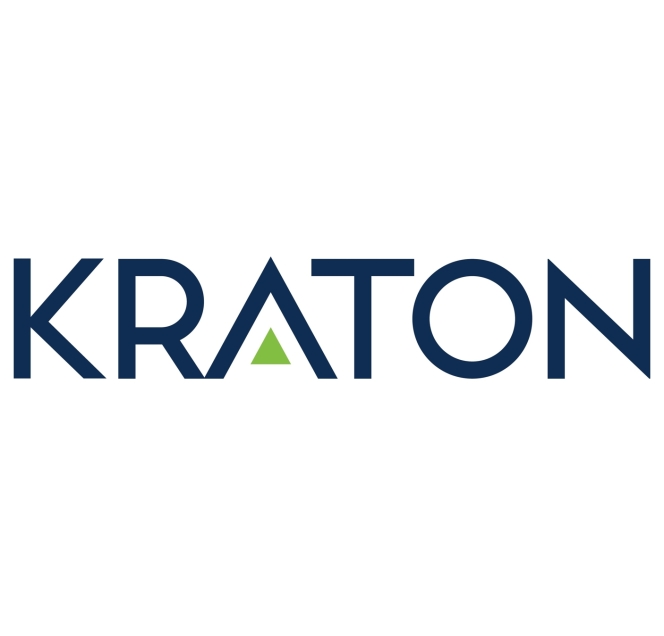
Kraton Corporation, a leading global producer of speciality polymers and high-value biobased products derived from pine chemicals, has revealed a new strategic initiative for its Berre, France facility. The plan involves streamlining its polymer operations to concentrate exclusively on manufacturing USBC products, which will result in the cessation of HSBC production at that site.
This move is designed to bolster Kraton's long-term competitiveness by optimising its manufacturing footprint in reaction to a global overcapacity for HSBC. The company has formally started an information and consultation process with the local Works Councils, with a final decision expected following this mandatory period. The company has reaffirmed its commitment to supplying HSBC from its broader global network and to leveraging its worldwide presence to continue adapting to market demands.
Prakash Kolluri, President, Kraton Polymers, said, “Our aim with this plan is to strengthen Kraton’s long-term competitive position by optimising our manufacturing footprint in response to changing market dynamics associated with global overcapacity of HSBC production capability. With this step, we are preparing Kraton for a sustainable future by securing Kraton’s position as the leading global HSBC producer. Kraton is fully committed to supporting our customers through this transition with supply of HSBC products produced within our unmatched global manufacturing network. We recognise the impact of these actions, and are committed to a safe, respectful and supportive transition. The health, safety and well-being of the employees remain our top priorities.”


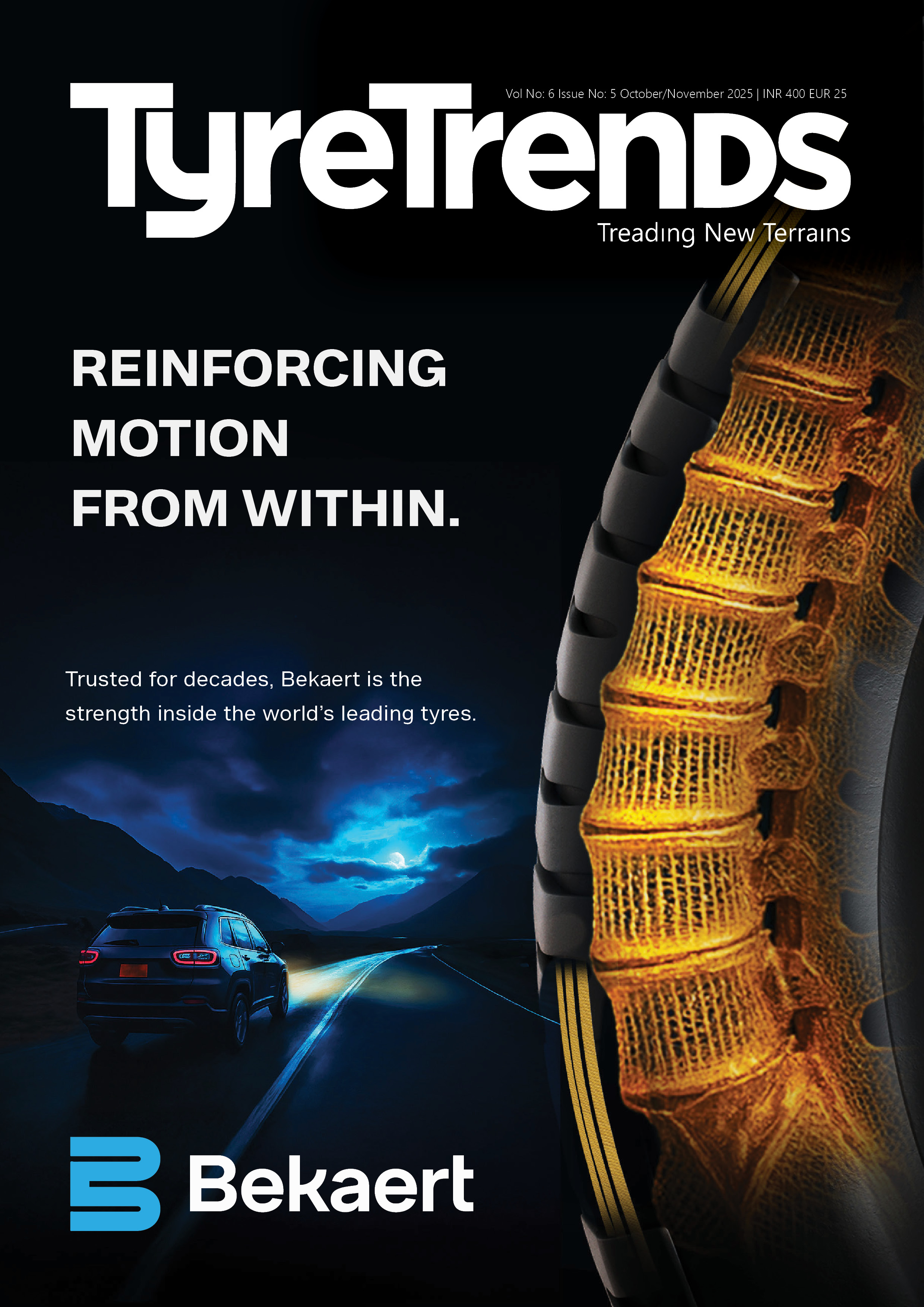



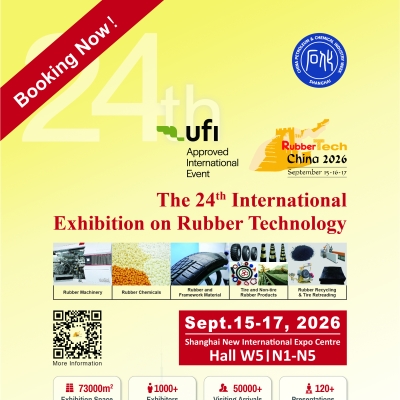
Comments (0)
ADD COMMENT